Motorcycle Helmet Guide: Safety and Style
H5. Importance: - Motorcycle helmets reduce the risk of serious injuries and fatalities in accidents.
H5. History: - First modern helmet developed in the 1950s.
H5. Types: - Full-face, open-face, modular helmets.
H5. Key Safety Features: - DOT and ECE certification, full-face protection, strong chin straps, ventilation.
H5. Choosing the Right Helmet: - Proper fit and size, comfort, style, special features.
H5. Caring and Maintenance: - Clean regularly, store and transport properly, replace every 5-7 years.
Motorcycle Helmets: The Ultimate Guide to Safety and Style
Motorcycling is an exhilarating experience that offers a sense of freedom and adventure. However, it's important to remember that riding a motorcycle also comes with inherent risks. One of the most important safety precautions you can take is wearing a motorcycle helmet. A helmet can significantly reduce your risk of serious injury or death in the event of an accident.
A. Importance of Motorcycle Helmets
According to the National Highway Traffic Safety Administration (NHTSA), helmets are estimated to be 37% effective in preventing fatal motorcycle crashes. In 2020, helmets saved the lives of an estimated 1,872 motorcyclists.
B. History of Motorcycle Helmets
The first motorcycle helmets were little more than leather or cloth caps designed to protect riders from the sun and wind. In the early 1900s, as motorcycles became more powerful and speeds increased, riders began to wear helmets made of hard materials such as leather, fiberglass, and metal.
The first modern motorcycle helmet was developed in the 1950s by a British company called Bell Helmets. The Bell 500 helmet was made of fiberglass and featured a shock-absorbing liner. It quickly became the standard for motorcycle safety helmets.
C. Types of Motorcycle Helmets
There are three main types of motorcycle helmets:
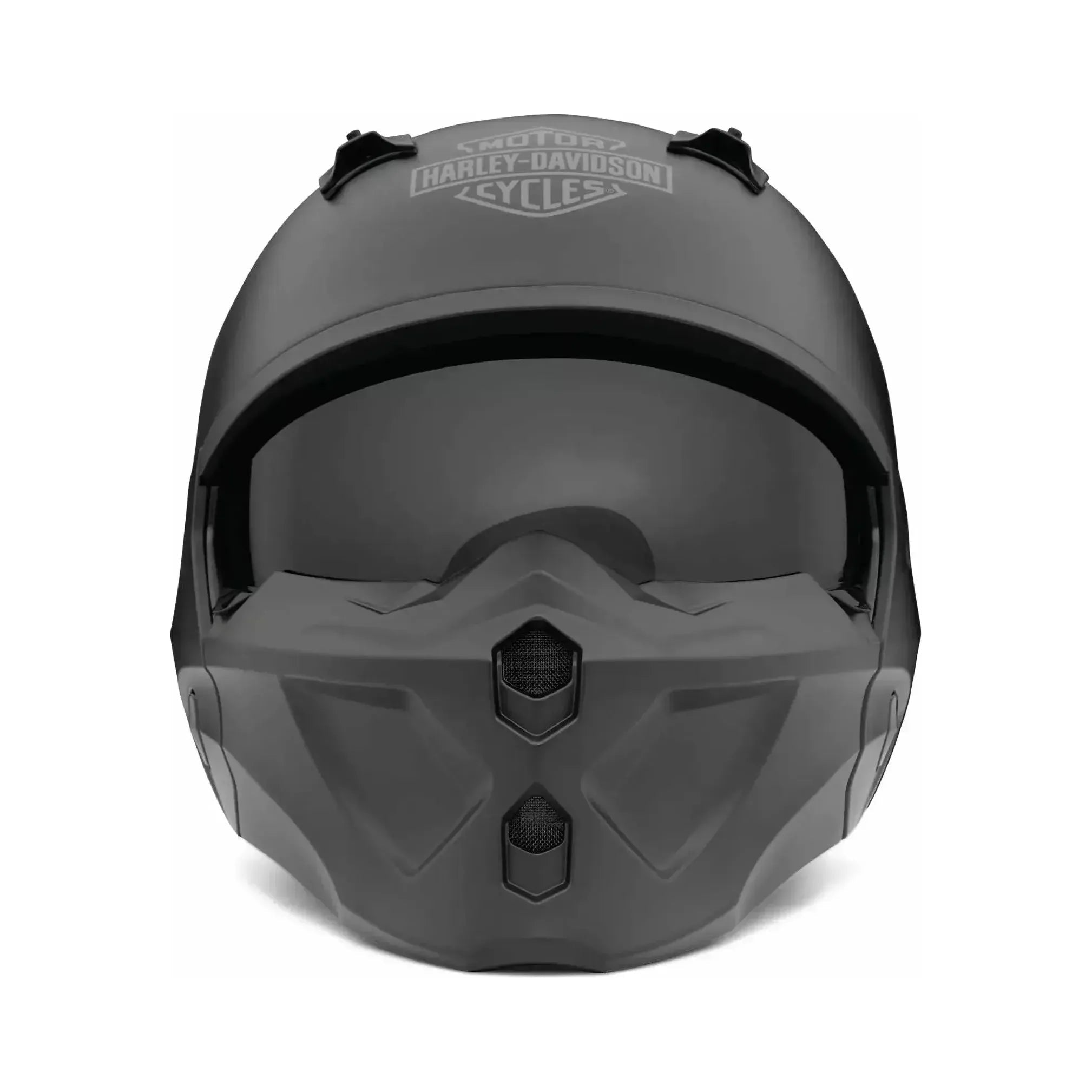
Title: HARLEY-DAVIDSON® GARGOYLE X07 2-IN-1 HELMET
Price: £269.99
SHOP NOW
- Full-face helmets: These helmets offer the most protection by covering the entire head, including the face. They are the best choice for riders who want the maximum level of safety.
- Open-face helmets: These helmets cover the top and back of the head but leave the face exposed. They offer less protection than full-face helmets but are more comfortable and provide better visibility.
- Modular helmets: These helmets combine the features of full-face and open-face helmets. The chin bar can be flipped up to allow for easier breathing and communication. Modular helmets are a good choice for riders who want the protection of a full-face helmet with the convenience of an open-face helmet.
"A motorcycle helmet is the single most important piece of safety gear you can wear. It can save your life." - National Highway Traffic Safety Administration (NHTSA)
II. Safety Features
When choosing a motorcycle helmet, it's important to consider the following safety features:
A. DOT and ECE Certification
The DOT (Department of Transportation) and ECE (Economic Commission for Europe) are two of the most widely recognized motorcycle helmet safety standards. Helmets that meet these standards have been tested and certified to provide a certain level of protection.
B. Full-Face vs. Open-Face Helmets
Full-face helmets offer more protection than open-face helmets because they cover the entire head, including the face. Open-face helmets leave the face exposed, which makes them less effective at protecting riders from facial injuries.
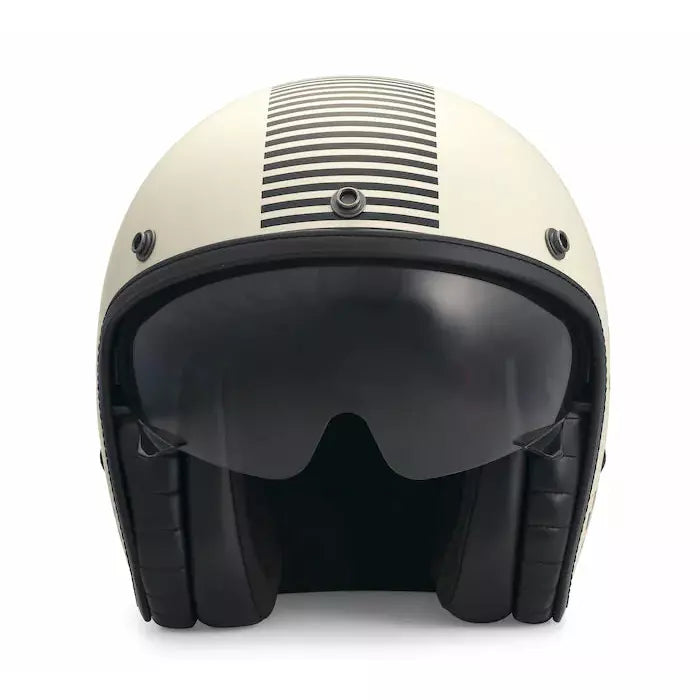
Title: HARLEY DAVIDSON® RALLY RACER SUN SHIELD X14 3/4 HELMET
Price: £150.00
SHOP NOW
C. Chin Straps and Buckles
The chin strap is one of the most important safety features of a motorcycle helmet. It keeps the helmet securely on your head in the event of an accident. Look for a helmet with a strong, adjustable chin strap that is easy to fasten and unfasten.
D. Ventilation and Breathability
A well-ventilated helmet will help keep you cool and comfortable while riding. Look for a helmet with vents that allow air to flow through the helmet and reduce moisture buildup.
E. Eye Protection (Visors and Shields)
The visor or shield on a motorcycle helmet protects your eyes from the sun, wind, and debris. Look for a helmet with a visor or shield that is impact-resistant and offers UV protection.
III. Choosing the Right Helmet
When choosing a motorcycle helmet, it's important to consider the following factors:
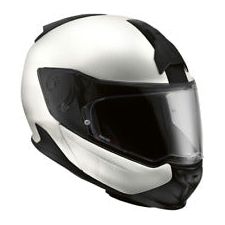
Title: BMW MOTORRAD SYSTEM 7 HELMET
Price: £520.00
SHOP NOW
A. Fit and Sizing
A helmet that fits properly is essential for safety and comfort. A helmet that is too loose will not provide adequate protection, while a helmet that is too tight will be uncomfortable and may cause pain. To find the right size helmet, measure the circumference of your head just above your eyebrows. Then, consult the manufacturer's sizing chart to find the helmet that corresponds to your head measurement.
B. Comfort and Weight
A motorcycle helmet should be comfortable to wear for extended periods of time. Look for a helmet that is lightweight and well-balanced. The helmet should also have a comfortable liner that wicks away sweat and keeps you cool.
C. Style and Aesthetics
Motorcycle helmets come in a wide variety of styles and colors. Choose a helmet that you like the look of and that matches your riding style.
D. Special Features (Bluetooth, Noise Cancellation, etc.)
Some motorcycle helmets come with special features such as Bluetooth connectivity, noise cancellation, and built-in speakers. These features can make your riding experience more enjoyable and convenient.
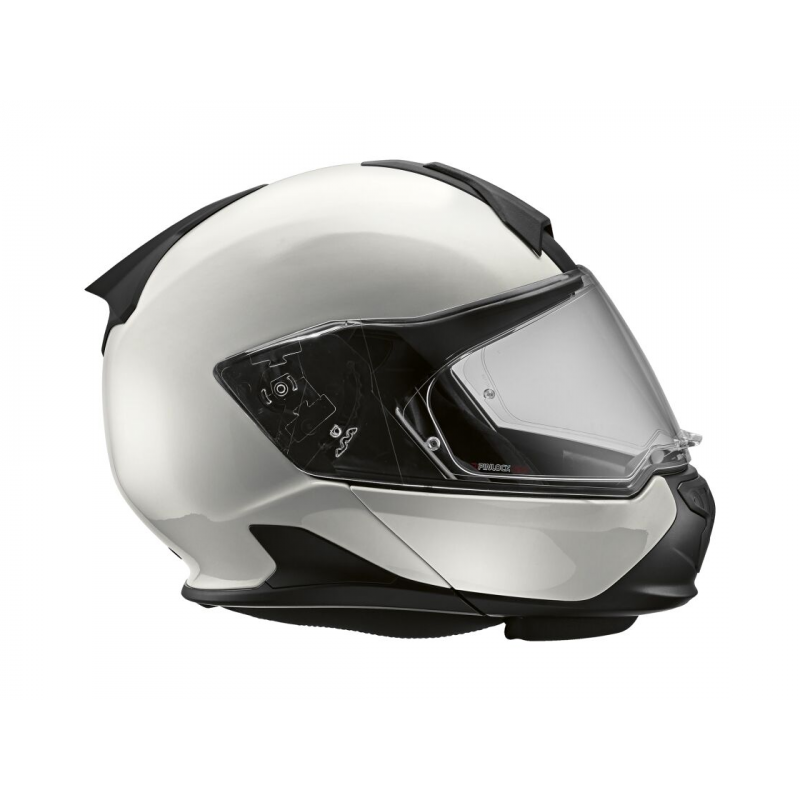
Title: BMW MOTORRAD SYSTEM 7 EVO HELMET - WHITE
Price: £520.00
SHOP NOW
IV. Caring for Your Helmet
To keep your motorcycle helmet in good condition, it's important to clean and maintain it regularly.
A. Cleaning and Maintenance
To clean your helmet, use a mild soap and water solution. Avoid using harsh chemicals or solvents, as these can damage the helmet's finish. After cleaning, dry the helmet thoroughly with a soft cloth.
B. Storage and Transportation
When you're not riding, store your helmet in a cool, dry place. Avoid exposing the helmet to extreme heat or cold. When transporting your helmet, use a helmet bag or case to protect it from damage.
C. Replacement Schedule
Motorcycle helmets should be replaced every 5-7 years, or sooner if they have been involved in an accident. The helmet's liner can also deteriorate over time, so it's important to have it inspected regularly by a qualified professional.
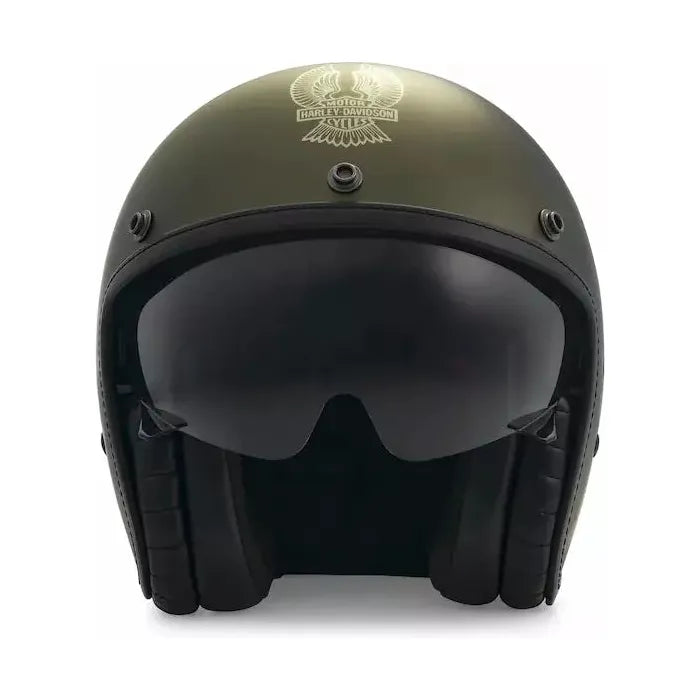
Title: HARLEY-DAVIDSON® SURPLUS X14 SUN SHIELD 3/4 HELMET
Price: £197.99
SHOP NOW
V. Legal Requirements
In most countries, it is a legal requirement to wear a motorcycle helmet. The specific helmet laws vary by country and region. In the United States, for example, all 50 states have laws that require motorcyclists to wear helmets.
A. Helmet Laws by Country and Region
To find out the helmet laws in your country or region, visit the website of your local department of transportation.
B. Penalties for Riding Without a Helmet
The penalties for riding without a helmet vary by country and region. In some jurisdictions, riders who are caught without a helmet may be fined or even arrested.
VI. Conclusion
Wearing a motorcycle helmet is the most important thing you can do to protect yourself in the event of an accident. When choosing a helmet, consider the safety features, fit, comfort, style, and special features that are important to you. By following these tips, you can choose a helmet that will keep you safe and stylish on your next ride.

Title: BMW MOTORRAD SYSTEM 7 EVO HELMET
Price: £520.00
SHOP NOW
Additional Information
- Motorcycle Safety Foundation
- National Highway Traffic Safety Administration (NHTSA)
- Helmet Laws by Country and Region
Outline
- Importance of Motorcycle Helmets
- History of Motorcycle Helmets
- Types of Motorcycle Helmets
- Safety Features
- Choosing the Right Helmet
- Caring for Your Helmet
- Legal Requirements
- Conclusion
FAQ
1. Why is wearing a motorcycle helmet important?
Answer: Wearing a motorcycle helmet significantly reduces the risk of serious injury or death in the event of an accident by protecting your head and face.
2. What type of motorcycle helmet is considered the safest?
Answer: Full-face helmets offer the most protection as they cover the entire head, including the face.
3. What are the differences between DOT and ECE certified helmets?
Answer: DOT (Department of Transportation) and ECE (Economic Commission for Europe) are widely recognized motorcycle helmet safety standards that ensure a certain level of protection through rigorous testing and certification.
4. How do I choose the right size motorcycle helmet?
Answer: To find the right size helmet, measure the circumference of your head just above your eyebrows and consult the manufacturer's sizing chart for the corresponding helmet size.
5. How can I ensure a comfortable fit for my motorcycle helmet?
Answer: Look for a helmet that is lightweight, well-balanced, and has a comfortable liner that wicks away sweat and keeps you cool.
6. Are there special features available in motorcycle helmets?
Answer: Some motorcycle helmets come with features such as Bluetooth connectivity, noise cancellation, and built-in speakers for enhanced riding experience and convenience.
7. How often should I clean my motorcycle helmet?
Answer: It's essential to clean your helmet regularly using a mild soap and water solution, avoiding harsh chemicals that can damage the finish. Dry the helmet thoroughly with a soft cloth after cleaning.
8. What is the recommended replacement schedule for motorcycle helmets?
Answer: Motorcycle helmets should be replaced every 5-7 years, or sooner if involved in an accident, as the liner can deteriorate over time. Regular inspections by a qualified professional are recommended.
9. Are motorcycle helmets legally required?
Answer: In most countries, wearing a motorcycle helmet is a legal requirement. Helmet laws can vary by country and region, so it's important to check the local regulations.
10. What are the penalties for riding without a motorcycle helmet?
Answer: Penalties for riding without a helmet vary by jurisdiction. In some areas, riders who are caught without a helmet may face fines or even arrest.
Explore More:
Ride in Style: Honda Apparel that's Revved up for the Road Click here
Motobike Jackets: Elevate Your Riding Experience Click here
Motorcycle Pants: Gear Up for Every Journey Click here
Motobike Gloves: Grip the Road with Confidence Click here
Rev Up Your Ride: Explore Harley-Davidson Apparel Click here
Motorcycle Apparel: Functional Meets Fashion Click here
Unleash the Thrill: Yamaha Apparel for True Riders Click here